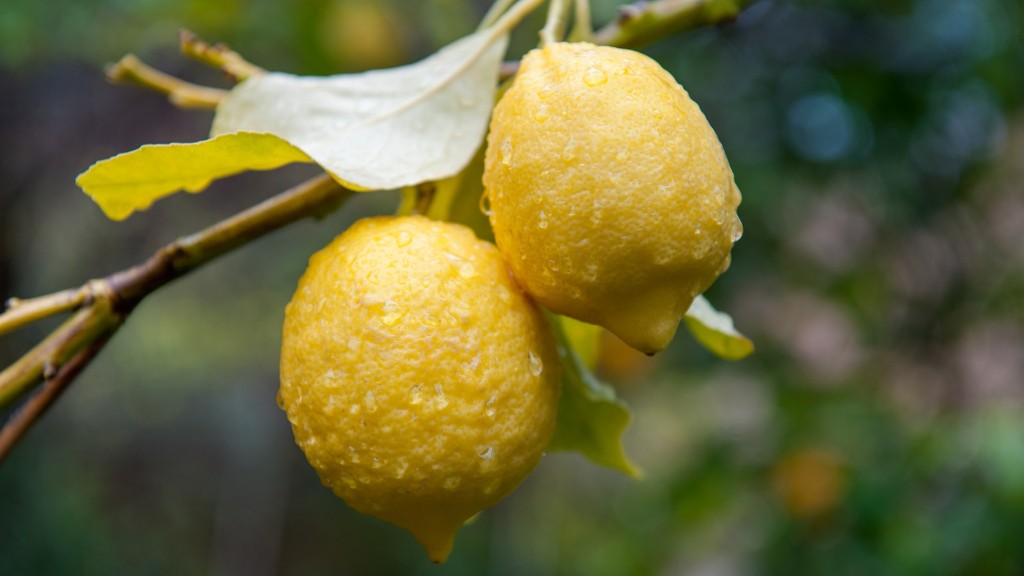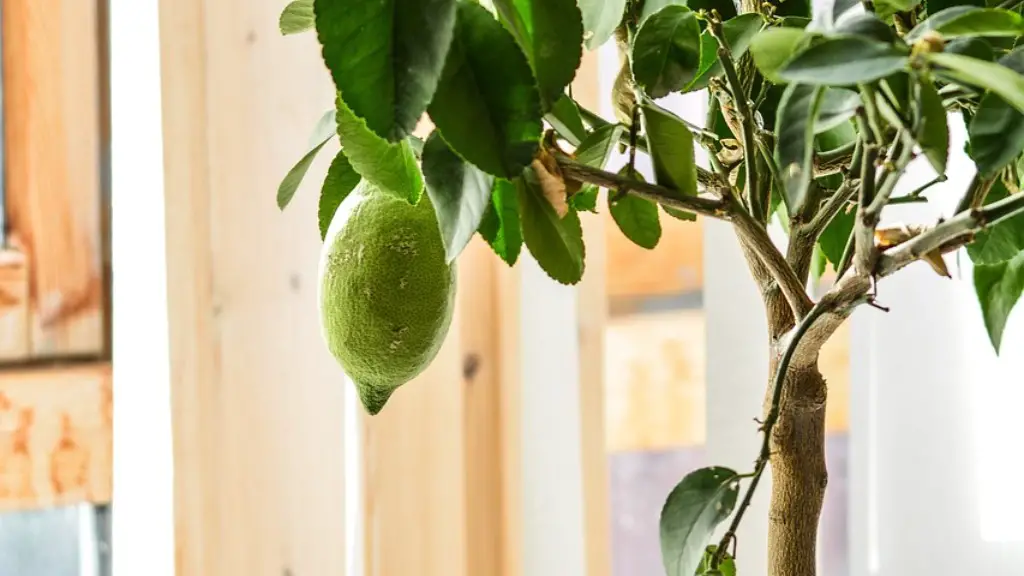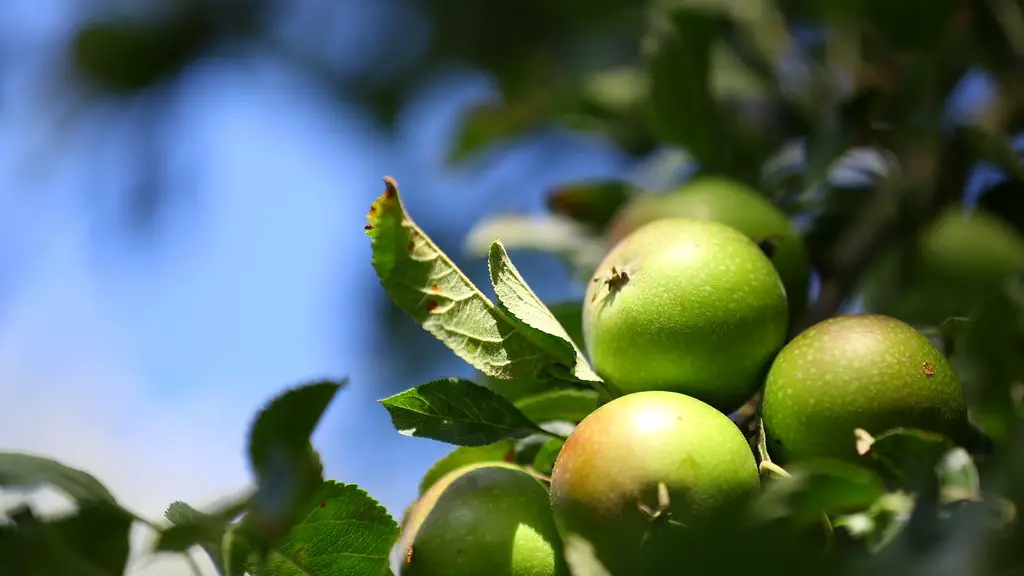The Impact Of Bark Shedding On Palm Trees
Bark shedding is a natural process for palm trees, especially when they are mature. However, sometimes the bark starts to fall off prematurely, and this can have a detrimental effect on the health of the palm tree. It is important to understand why the bark may be falling off your palm tree, so that you can take the necessary steps to restore its health.
When bark begins to shed from a palm tree, it can weaken the structure of the tree, making it vulnerable to disease and insect damage. Other factors that can cause bark shedding are improper watering, lack of fertilizer, and incorrect pruning. To help prevent premature bark shedding, it is important to care for your palm tree properly. This includes providing it with enough water, and making sure that it receives a balanced supply of nutrients.
In some cases, the bark of a palm tree may begin to shed due to an underlying disease or pest infestation. If this is the case, it is important to diagnose and treat the issue as soon as possible. Early diagnosis and treatment of an underlying issue can reduce the risk of the issue becoming worse and potentially killing or damaging the palm tree. Common diseases or pests that can cause premature bark shedding include scale insects and root rot.
Although it can be difficult to determine the exact cause of premature bark shedding from a palm tree, there are some steps that you can take to prevent it from occurring. First, you should ensure that the palm tree receives a balanced supply of nutrients, water, and sunlight. Secondly, regularly monitor the tree for signs of disease or pest infestations, and treat any issues that you find with appropriate measures.
In addition, make sure to prune the tree correctly and always use quality tools to help prevent damage to the tree. Finally, do not place too much stress on your palm tree by tying objects to it or placing decorative items on it. These measures can help to reduce the risk of premature bark shedding.
The Causes Of Palm Tree Leaf Loss
Palm tree leaf loss is a natural part of the life cycle of a palm tree, just like the shedding of bark discussed above. But, palm trees can sometimes lose their leaves prematurely. These leaves can become brown and brittle and ultimately fall off the tree. While this is a normal process for palm trees, it is important to understand the potential causes of this premature leaf loss to help ensure your health of your palm tree.
One of the most common causes of premature leaf loss is inadequate water. When a palm tree does not receive enough water, it will struggle to survive and can lose leaves prematurely. Other potential causes of premature leaf loss are nutrient deficiencies, pest and disease infestations, and environmental stresses, such as extreme temperatures and strong winds. In some cases, improper pruning can also trigger leaf loss.
In order to prevent premature leaf loss, it is important to care for your palm tree properly. This includes making sure that it receives an adequate supply of water, nutrients and sunlight. Additionally, regularly inspect the tree for signs of pest or disease infestations, and treat any issues that you find with appropriate measures. Furthermore, prune the tree correctly and avoid stressing the tree with excessive weight, and helping it to remain healthy.
The Benefits Of Mulching Palm Trees
Mulching your palm tree is an effective way to promote its health. Mulch provides a protective layer of material around the base of the tree, which acts as a barrier to moisture and helps to keep the soil from becoming too dry or too wet. Mulch also acts as an insulator, helping to retain heat in the soil and protect against temperature fluctuations.
In addition, mulch provides nutrients to the palm tree, as it breaks down over time. It also helps to suppress weeds, keep the soil aerated, and even encourage beneficial insects, such as earthworms, to the area. Finally, it helps to keep the soil moist, which is important for the health of the palm tree.
When mulching your palm tree, it is important to use the right type of mulch. Organic mulches, such as wood chips, straw, or compost, are the best option for most palm trees. These materials are slow to break down, so you will not need to add new mulch as often. In addition, organic mulch helps to increase the nutrient levels of the soil and promote beneficial organisms.
You will also need to apply the mulch correctly to ensure that it is effective. Start by spreading a thick layer around the base of the tree, making sure that the root zone is covered. Make sure to leave a few inches of space between the trunk of the tree and the mulch, as this can help to prevent rot and diseases. Avoid piling the mulch too high, as this can negatively affect the oxygen levels in the soil.
Protecting Your Palm Tree During Winter
Many people are unaware that during the winter, their palm trees are at risk. Rapid temperature changes, heavy snowfall, and extreme cold can harm your palm tree if it is not protected properly. Luckily, there are several steps you can take to protect your palm tree during the winter months and ensure that it remains healthy.
First and foremost, you should wrap your palm tree with a suitable material, such as burlap. Wrapping the tree will help to protect it from temperature fluctuations and from the elements. You should also ensure that your palm tree receives an adequate amount of water during the winter months. This is especially important if the soil becomes dry and the tree is at risk of becoming dehydrated. Additionally, try to avoid fertilizing your palm tree during the winter.
It is also a good idea to avoid pruning your palm tree during the winter months, as this can expose the tree to damaging elements. Finally, it is important to keep an eye on the tree and check it regularly for signs of damage or distress. If you notice anything out of the ordinary, contact a professional to help you identify and remedy the issue.
The Impact Of Soil Conditions On The Health Of Palm Trees
Soil quality is an important factor in the health of a palm tree. Poor soil conditions can lead to premature root rot and other issues affecting a tree’s growth and health. Therefore, it is important to understand what constitutes good soil conditions for a palm tree and to take measures to ensure your tree is receiving the best possible soil.
When it comes to soil quality, the most important factors are texture, drainage rate, and nutrient content. The ideal soil for palm trees should be light and well-draining, with plenty of organic matter. Additionally, it should have a balanced supply of nutrients, including nitrogen, phosphorus, and potassium. The soil should also be slightly acidic and have a pH level of 6.5-7.5.
If your soil does not meet these requirements, you can take steps to amend it. This can include adding organic matter, such as compost or manure, to the soil to improve its texture and nutrient content. You can also use a soil testing kit to determine the pH level and nutrient content of your soil. Additionally, it is important to keep the soil aerated, as overly compacted conditions can impact the health of the tree.
Maintaining The Pruning Of Palm Trees
When it comes to maintaining the health of a palm tree, pruning is an essential part of the equation. Pruning helps to promote the growth of a palm tree, as it removes weak or damaged branches and helps to promote the growth of healthier branches. It also helps to improve the overall structure of the tree and make it more resistant to pests and disease.
When it comes to pruning a palm tree, it is important to use the appropriate tools and techniques. Start by removing any dead, diseased, or damaged limbs. Then, remove any branches that are growing at odd angles or do not fit the overall shape of the tree. You should also remove any seed buds or fronds that are growing directly from the trunk of the tree. Finally, trim the remaining branches to give the tree a uniform and attractive silhouette.
It is important to avoid over-pruning a palm tree, as this can weaken the tree structure and expose it to diseases and pests. Over-pruning can also cause a palm tree to produce more fronds than it can support, resulting in premature frond yellowing. It is best to prune your palm tree at the end of the growing season, so that it has enough time to regrow any lost branches before the winter months.
Ensuring That Your Palm Tree Has Adequate Water
Giving a palm tree the right amount of water is essential to its health and vibrancy. Too much water can lead to root rot and other issues, while too little water can cause a palm tree to become dehydrated and can lead to leaf loss. It is important to establish the ideal watering schedule for your particular palm tree to ensure it is receiving enough water.
When it comes to watering a palm tree, the amount and frequency of water will depend on the tree’s age, size, and the conditions of the soil. In general, a mature palm tree should receive about 1 to 2 inches of water once a week during the summer months. In other seasons, the amount of water should be reduced accordingly. You should also avoid applying water directly to the trunk of the tree, as this can lead to rot.
You should also monitor the water levels in the soil to ensure your tree is not getting too much or too little water. Dry, cracked soil is an indication that your tree is not getting enough water. If the soil is soggy or has standing water, your tree may be receiving too much. Be sure to adjust the amount of water you give your tree accordingly to ensure it has an optimal supply of moisture.
The Benefits Of Regularly Inspecting Your Palm Tree
Regularly inspecting your palm tree is a great way to keep your tree healthy and ensure it is not succumbing to any diseases or pest infestations. Inspect your palm tree on a regular basis, looking for signs of disease, pest infestation, or damage. Many common diseases and pests that affect palm trees can be identified by yellowing or browning fronds, wilting or discolouration of fronds, or the presence of insects on the leaves.
If you identify any of these issues, it is important to address them as soon as possible. Early identification and treatment of a pest or disease can prevent it from causing more significant damage to the tree. Additionally, it is important to inspect your tree for damage that may have been caused by environmental stresses, such as strong winds or temperature fluctuations.
Regular inspections are not just important for the detection of diseases and pests, they can also help to identify potential issues with the tree’s growth or structure. For example, you may notice weak branches or branches that rub against one another, which may require pruning. Additionally, you may notice branches that are not receiving adequate sunlight, which may require relocation or repositioning.
The Impact Of Fertilizers On The Health Of A Palm Tree
Fertilizers are important for the health of any plant, including palm trees. A healthy palm tree requires a balanced supply of nutrients, including nitrogen, phosphorus, and potassium. Applying fertilizers to your palm tree can help to ensure it is receiving the nutrients it needs to stay healthy.
When it comes to applying fertilizers to a palm tree, it is important to use a fertilizer specifically designed for palm trees. These fertilizers contain the essential nutrients that the tree needs and have been formulated to ensure the tree is receiving a balanced supply of nutrients. Additionally, you should take care to apply the fertilizer correctly and avoid placing it directly on the trunk of the tree, as this can lead to root rot.
You should also be careful not to over-fertilize your palm tree, as this can lead to excessive leaf growth and nutrient toxicity




